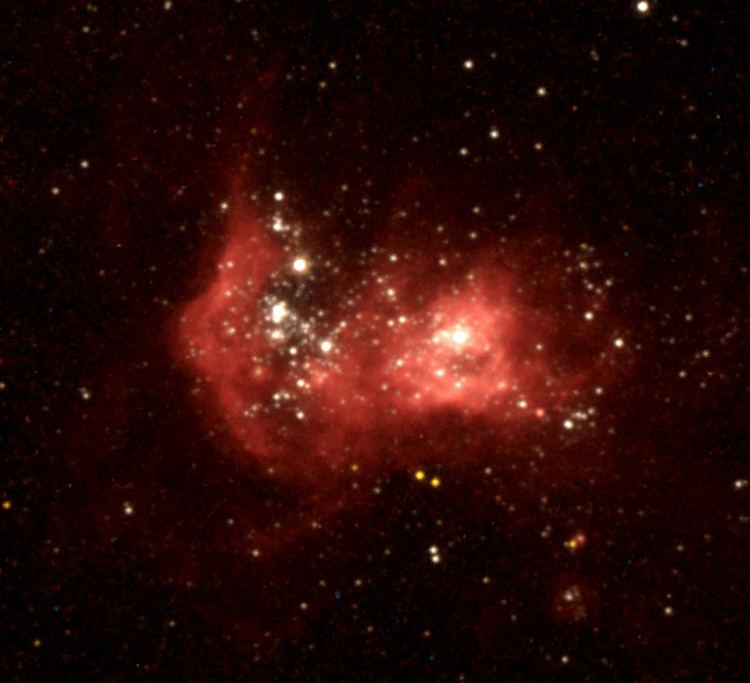Luminosity (bolometric) 6,300,000 L☉ | Magnitude 17.88 Apparent magnitude (V) 17.88 | |
 | ||
Similar NGC 2363, HD 5980, WR 102ka, AG Carinae | ||
NGC 2363-V1 is a luminous blue variable star in the star-forming region NGC 2363, situated at the far southwestern part of the irregular galaxy NGC 2366 in the constellation Camelopardalis, near the North Celestial Pole. It was discovered in 1996 by Laurent Drissen, Jean-Rene Roy, and Carmelle Robert while examining images taken by the Hubble Space Telescope Wide Field Planetary Camera 2.
NGC 2363-V1 is one of the most luminous stars known. It has been undergoing an increase in temperature and luminosity for the last 20 years, after a dramatic increase in its mass loss. Significant luminosity variations are very rare in LBVs, with the best example being Eta Carinae during its Great Eruption, but NGC 2363-V1 currently shows an extreme B hypergiant spectrum similar to P Cygni rather than the cool Eta Carinae outburst spectrum.
